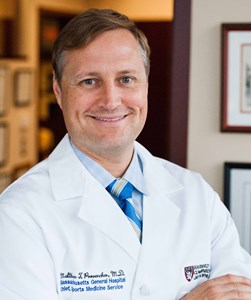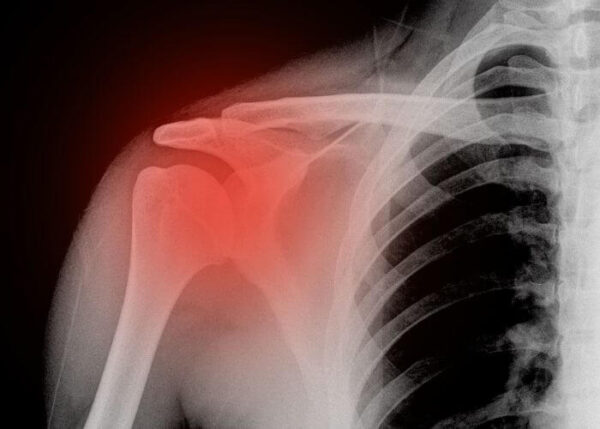Shoulder Fracture Specialist

Are you an athlete who participates in contact sports? If so, you may be at risk of sustaining a shoulder fracture. A shoulder fracture is commonly caused by sudden force, impact, or trauma to the joint during sports activities or a hard fall. Shoulder fracture specialist, Dr. Matthew Provencher provides diagnosis and both surgical and nonsurgical treatment options for patients in Vail who have sustained a shoulder fracture. Contact Dr. Provencher’s team today!
What is a Broken Shoulder?
Trauma to the shoulder joint, resulting in a fractured shoulder, can occur from sudden force or impact during sports activities or a traumatic event. A shoulder fracture occurs within the joint structure and appears on an x-ray as a break or crack in the bone. Dr. Matthew Provencher, orthopedic shoulder specialist serving patients in the Vail, Aspen, Colorado Springs and Denver, Colorado area, is extremely experienced at diagnosing and treating a shoulder fracture on a case-by-case basis dependent on the bone involved including the collarbone, humerus, and/or shoulder blade.
A shoulder fracture is first distinguished based on whether it is non-displaced or displaced. A non-displaced shoulder fracture refers to pieces of broken bone that line up on each side of the crack or break. A displaced fracture refers to a break or crack that features pieces of bone that do not line up on each side. Displaced fractures usually require manipulation during the treatment process to restore normal shoulder anatomy.
Three distinct bones in the shoulder joint can experience a fracture, including:
- Collarbone- A clavicle fracture
- Upper arm bone- A humerus fracture
- Shoulder blade- A scapula fracture
What are the Common Types of Shoulder Fractures?
However, clavicle and humerus fractures are most common.
- A clavicle fracture is common in individuals of all ages, typically located at the middle portion of the clavicle or where the clavicle meets the shoulder blade or sternum. Clavicle fractures may result from a direct or indirect blow to the clavicle during a collision, automobile accident or fall onto an outstretched arm. Many patients will experience a visible deformity, or bump, at the fracture site. In certain cases, a bone fragment may result in a “tent” deformity.
- A humerus fracture can occur from a fall or direct impact and is commonly seen in older patients with poor bone density due to osteoporosis or a similar condition. Humerus fractures are diagnosed and classified by many physicians on a grading scale, including distal humeral fractures, humeral shaft fractures and proximal humeral fractures.
What are the Symptoms of a Shoulder Fracture?
The symptoms of a fractured shoulder are easily recognizable in many patients since they occur immediately following a collision, fall or automobile accident. Symptoms include pain at the injured area in combination with tenderness, bruising and swelling. Certain patients may also experience a deformity (bump) under the skin at the fracture site.
How to Know if you have a Broken Shoulder
An urgent care facility or emergency room visit is recommended if a patient believes they have sustained a shoulder fracture. Fractures, such as a clavicle fracture or a humerus fracture, will be diagnosed by performing a complete physical examination of the affected shoulder, as well as a series of x-rays. An MRI or CT scan may also be performed in more serious fracture cases to gain a better view of the fracture pattern and site.

Do you Need Surgery for a Fractured Shoulder?
Many fractured shoulder cases heal in approximately four months with non-surgical treatment. Dr. Provencher typically stabilizes the injured joint in a sling or similar device to immobilize the joint, allowing the bone to heal back together. Once the pain has subsided and the bone has sufficiently healed, Dr. Provencher will commonly prescribe a physical therapy program designed to help regain strength and motion of the joint.
How to Treat a Fractured Shoulder with Surgery?
Dr. Provencher will determine if shoulder surgery is necessary based on injury severity, patient’s age, patient’s activity level and patient’s risk of developing osteoarthritis if the fracture is not surgically repaired. A clavicle fracture and humerus fracture are surgically treated in many cases if the patient is physically active and significant separation is seen at the bone ends.
Dr. Provencher offers a wide range of surgical techniques designed to treat various types of shoulder fractures, including:
- Percutaneous pinning, which involves placing pins in the bone to secure them back in place.
- Open reduction internal fixation (ORIF), which involves opening up the fracture, realigning the bones and putting a plate and screws in place to hold the bones together.
- Shoulder hemiarthroplasty, which involves replacement of the ball (humeral head) of the joint if too many pieces of bone are present.
For more resources on a fractured shoulder, including a clavicle fracture or a humerus fracture, please contact Dr. Matthew Provencher, orthopedic shoulder specialist serving patients in the Vail, Aspen, Colorado Springs and Denver, Colorado area.